Thursday, January 30, 2014
Homework For 2/4
http://en.wikipedia.org/wiki/Old_Master
http://oldmasterdrawings.net/
http://www.old-master-drawing.com/
Wednesday, January 29, 2014
How to Rival the Old Masters [feedly] TROIS CRAYONS
How to Rival the Old Masters
// Artist Daily
What was emulation?
The classical formation of artists and architects in the Renaissance and Baroque took the apprentice on a trajectory from imitation to emulation to invention. If imitation was the foundation of an artist's training--copying a master's drawings, drawing from casts, eventually drawing from the live model--emulation marked the stage where the apprentices began to establish their own mastery by rivaling their masters' work. That's what defines emulation: rivaling, by means of imitation. Those of us who love the Old Masters often revere them to the point of worship--"We're not worthy!"--but they challenged themselves by challenging their own masters. If we want to recover that culture, plucking up the courage to emulate the Old Masters, not just imitate them, is how to do it.
 |
| Trois crayons drawing copy of Baciccio's St. Joseph and the Christ Child, |
Historically, imitating someone else's work was part of forming your own style, but it wasn't a way to make your own work. The imitation of subject matter, though, was part and parcel of the humbler genres of documentary art--still lifes, landscapes, portraits. The pinnacle of artistic production was instead what they called history painting, and this involved imagining scenes from mythology, history, or the Bible; how one imagined was supposed to depend on the canon of previous imaginings. Artists who practiced history painting shaped their approach by emulating other artists, whether contemporaries or the ancients. That's how I've trained myself over more than thirty years, by drawing in museums, churches, and the great houses of Europe.
The materials of emulation
So, how does one go about learning from the Old Masters in order to rival them? Choosing materials is an essential part. Another is by trying to reconcile what were once opposing camps. One of the big debates in Renaissance and Baroque culture was between partisans of drawing (or line), versus those of color; in the sixteenth century that was a battle between the Florentines and Venetians, while in the seventeenth and eighteenth centuries it was between the followers of Poussin and those of Rubens (Poussinistes vs. Rubenistses). But Rubens himself was no partisan, and one of the ways he tried to reconcile the camps was with trois crayons drawing. By using three chalks (red, black, and white) he could depict not just value but temperature, and hint at palette. Drawing from painting using trois crayons lets you apprehend not only form, but the essentials of color as well. You can also invent a painting in the early stages in ways that simultaneously resolve composition, subject, and atmosphere.
Historians who discuss trois crayons often treat the red (sanguine) chalk as an embellishment of a black line drawing, but my experience tells me that sanguine should in fact be the first phase, since it's more forgiving in laying out preliminary outlines. I treat trois crayons as a sanguine drawing with black and white accents. Of course, white implies working on a medium-toned paper, and the value and hue of the paper is a big part of the eventual palette of the final drawing. Warm-hued paper establishes warm middle tones, whereas cool-blue or grey-paper highlights the red as the sole warm tone. The latter, it seems to me, was the primary choice of the Venetian camp, although Rubens himself often worked on warm-toned paper.
 |
| Trois crayons detail drawing copy of Lorenzo the Magnificent Receiving the Muses |
Working while traveling means keeping a sketchbook or portfolio with multiple sheets, and the portfolio is best suited to carrying a variety of papers. Since fixing chalk is usually not convenient while on the road, I prefer drawing with an oil based crayon or pencil, which smears less. I also need several pencils, since I go through at least two or three sanguine points in each drawing, and sharpening in most public institutions is also inconvenient (it helps if you have a sharpener that collects the shavings).
Drawing after the Old Masters shapes not only your skills, but also your taste. It impresses on you their idea of the beautiful, which can't really be apprehended any other way. And knowing how they operated, how they saw themselves with respect to their rivals, alerts you to how you might begin to rival them.
--David
David Mayernik is an artist, architect, professor, and author of The Challenge of Emulation in Art and Architecture (published by Ashgate, 2013).
----
Shared via my feedly reader
Sent from my iPad
Tuesday, January 28, 2014
Don't Fear the Pack [feedly]
Don't Fear the Pack
// Artist Daily
 | ||
| Painting in a group means gaining insights from others and solidifying your own point of view. |
But I think it is mostly about enjoying each other's company. Working creatively takes a lot of personal perseverance and being able to come together as a group with friends and fellow artists makes the struggles seem less insurmountable and the successes a lot more worthwhile. And there is always the opportunity to learn from each other—that's what I enjoy the most. Open and honest dialogue on what we are all passionate about, and art instruction that is organic to the task at hand. I first learned about putting a palette in the freezer to keep it from drying out when I was with a bunch of artists who were just working together.
Sometimes you compare and contrast working methods and come away with a better understanding of how the process can work for you and how you can achieve your own vision knowing what others have tried. I learned way more over a weekend session with a bunch of encaustic and mixed media artists than from just my own experimentations with the medium's art techniques.
You can also get exposed to new ways of working and share discoveries you have made about your medium of choice or working method. One of the most challenging parts of the art process is color. We respond to color, we want to recreate the colors we see in front of us or in our heads, but how to paint and mix colors in order to do it? I think one of the best ways is in a group painting session. When you are all looking at something similar and everyone is experimenting to get there, moments of discovery and insight naturally come about. It's the same with learning the techniques associated with an unfamiliar media, like acrylic painting is for me. That's why I think of Acrylic Painting with Passion, as the culmination of a really fulfilling group painting session. All of the details on paint texture and surface treatment and the details on color pairings and mixing is more than I could ever discover alone.
Sometimes painting in a "pack" reinvigorates you because you link up with like-minded artists who share many of the same goals. But I think the best takeaway is always leaving the group steadier and more confident in your own work and your own choices. Whether you decide that means meeting up with artists or continuing on your own independent path and making the most of resources like Acrylic Painting with Passion, I wish you much success however you choose to find it.

----
Shared via my feedly reader
Sent from my iPad
Eye Candy for Today: Simon Vouet drawing [feedly]
Eye Candy for Today: Simon Vouet drawing
// lines and colors :: a blog about drawing, painting, illustration, comics, concept art and other visual arts

Creusa Carrying the Gods of Troy, Simon Vouet
Black and white chalk on paper, 11×8″ (28x20cm). Original is in the National Gallery of Art, D.C.
The image on the linked page is zoomable. Click Download for larger images. You have to create a (free) account to download the high-resolution images.
----
Shared via my feedly reader
Sent from my iPad
Saturday, January 25, 2014
Art Teacher Portrait Winners [feedly]
Art Teacher Portrait Winners
// Gurney Journey

Sean Cheatham, drawn by David Patel.
David captured Sean's way of holding his painting brush and his off-hand brushes, plus the tattoo on his left arm, and I love the slight exaggeration of the shapes. The nervous pen line has a lot of energy.
This portrait is efficiently painted, and yet it conveys the poise and concentration of the subject. This could only have been done with a big brush, well loaded with paint, straight ahead with no lay-in. I love the way the wet shapes of the arm and the neck merge into the blue of the shirt, and I love the bits of white paper left untouched. Masterful job!
So thanks to everyone who entered. It was really tough to choose. And to the winners, please email me your mailing address, and I'll get the posters and the DVD on their way to you.
----
Shared via my feedly reader
Sent from my iPad
Thursday, January 23, 2014
Online Gesture Tools Links
Spend a few pages (Or many more!) Practicing from these great gesture sites.
If you find them useful you may want to donate to them at some time.
http://artists.pixelovely.com/practice-tools/figure-drawing/
http://www.posemaniacs.com/
Tuesday, January 21, 2014
Mochitsuki 2014 – Year of the Horse
Event Details
Mochitsuki 2014 – Year of the Horse
Mochitsuki Community Fair: 11:00AM – 4:00PM
Sunday, January 19, 2014
Small Figures [feedly]

In the series at the upper left I tried to capture the basic gesture of the folds of the costume using pencil and white gouache. At upper right is more of a tubular form emphasis, using just light and shadow and no outline.
In the middle row, I used a brush and ink to try to capture the black silhouette. In the bottom row, we moved the light around to the back and I tried drawing edge-lit silhouettes, where the light side becomes the paper color.
Drawing directly with the brush, I first drew the side away from the light before sorting out the complex lit side. This way of sketching gives a very photographic effect.
Sent from my iPad
Friday, January 17, 2014
Remembering Rockwell’s “Golden Rule” [feedly]
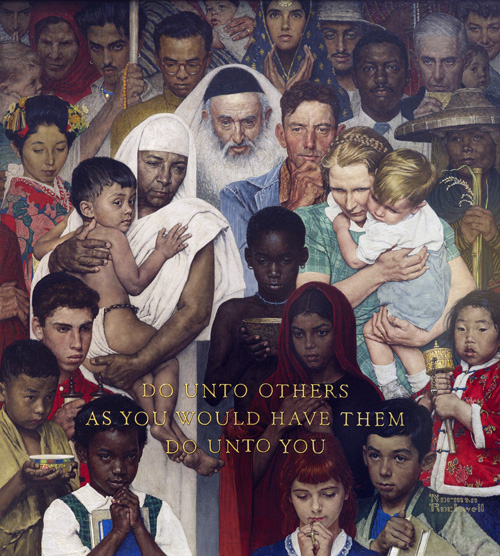
Golden Rule, 1961. Cover illustration for The Saturday Evening Post, April 1, 1961. Norman Rockwell Museum Collections. ©SEPS: Curtis Publishing, Indianapolis, IN
In the 1960s, the mood of the country was changing, and Norman Rockwell's opportunity to be rid of the art intelligentsia's claim that he was old-fashioned was on the horizon. His 1961 Golden Rule was a precursor to the type of subject he would soon illustrate. A group of people of different religions, races and ethnicity served as the backdrop for the inscription "Do Unto Other as You Would Have Them Do Unto You." Rockwell was a compassionate and liberal man, and this simple phrase reflected his philosophy. Having traveled all his life and been welcomed wherever he went, Rockwell felt like a citizen of the world, and his politics reflected that value system.
I'd been reading up on comparative religion. The thing is that all major religions have the Golden Rule in Common. "Do unto others as you would have them do unto you." Not always the same words but the same meaning.–Norman Rockwell, The Norman Rockwell Album.
From photographs he'd taken on his 1955 round-the-world Pam Am trip, Rockwell referenced native costumes and accessories and how they were worn. He picked up a few costumes and devised some from ordinary objects in his studio, such as using a lampshade as a fez. Many of Rockwell's models were local exchange students and visitors. In a 1961 interview, indicating the man wearing a wide brimmed hat in the upper right corner, Rockwell said, "He's part Brazilian, part Hungarian, I think. Then there is Choi, a Korean. He's a student at Ohio State University. Here is a Japanese student at Bennington College and here is a Jewish student. He was taking summer school courses at the Indian Hill Museum School." Pointing to the rabbi, he continued, "He's the retired postmaster of Stockbridge. He made a pretty good rabbi, in real life, a devout Catholic. I got all my Middle East faces from Abdalla who runs the Elm Street market, just one block from my house." Some of the models were from Rockwell's earlier painting United Nations. Though it was never finished, it was going to be a "a mass of people," he said, "representing the people of the world, waiting for the delegates to straighten out the world, so that they might live in peace and without fear."
Today a large mosaic of Rockwell's Golden Rule is on view at the United Nations headquarters in New York City.
See the originals: Golden Rule and United Nations are currently on view at Norman Rockwell Museum.
View the restoration of Rockwell's United Nations painting below:
Sent from my iPad
Homework DueTuesday 21 January
2 pages of your sketchbook examining and familiarizing yourself with the face and neck muscles and facial structures.
One side view one view from front on.
Make these pages in the best way you think you will learn and study the subject matter. If you don't know that way experiment. For some people it may be labeling, for others it may be through repetition, for others it may be through really careful slow perfect drawings.
Thursday, January 16, 2014
Four portraits of Marie Jullian Ginoux, painted by Vincent van Gogh at Saint-Paul asylum in Saint-Rémy (February 1890), and the charcoal drawing by Paul Gauguin (November 1888) on which they are based [feedly]
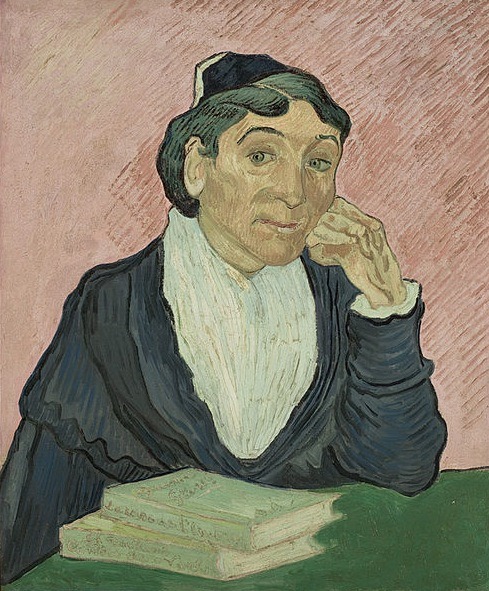
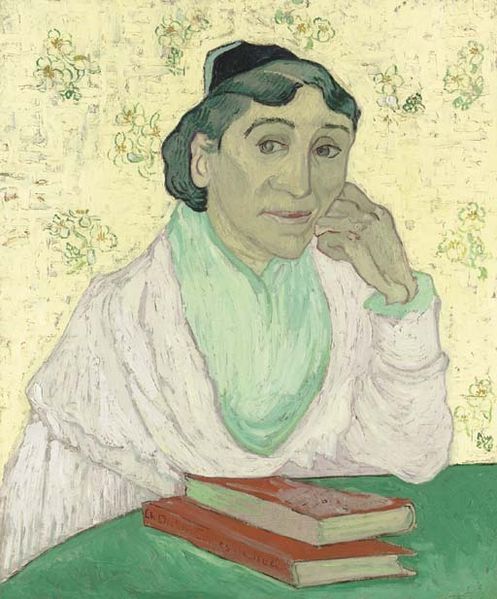
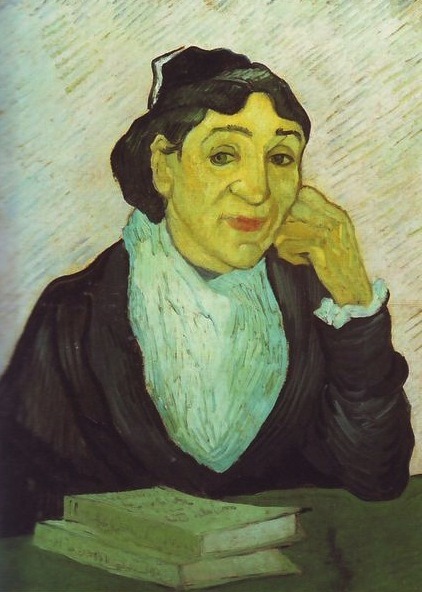
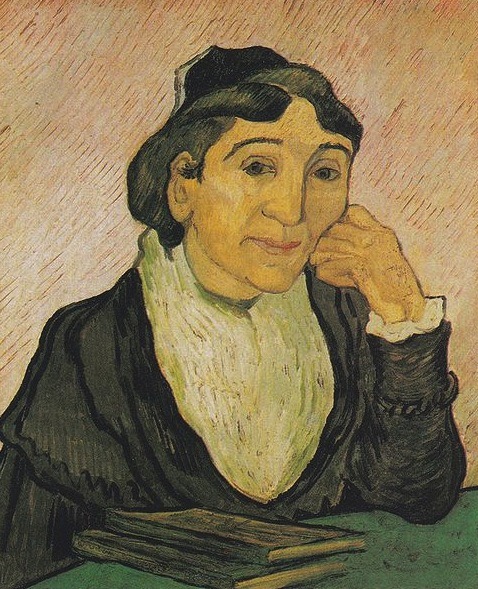
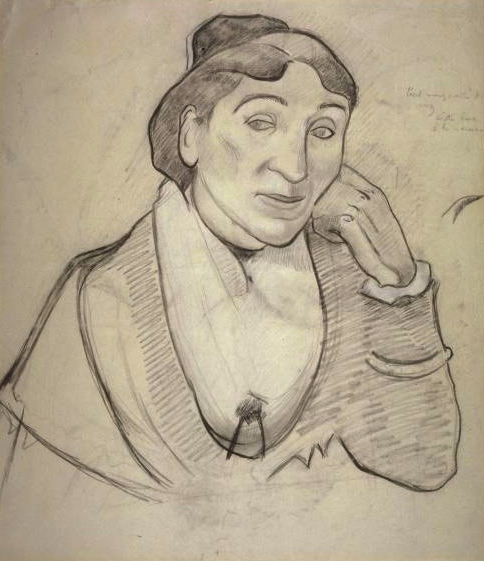
Sent from my iPad
Definitive evidence that anyone can draw life (video) | [feedly]
Sent from my iPad
Tuesday, January 14, 2014
Pulp Life Paintings
Drawing Lessons from Edward Hopper [feedly]
 | |
| Street Scene with Barbershop by Edward Hopper, n.d., charcoal on paper, 7-1/4 x 9-1/4 in. Collection of Mr. and Mrs. Bruce C. Loch. All works courtesy of Thurston Royce Gallery of Fine Art, LTD. |
I don't think I'd be exaggerating by calling Edward Hopper one of America's national treasures. His work captured a time and place like no one else, and his distinctive style makes his work instantly recognizable.
But his drawings are an undiscovered secret, as I found out when I began looking at many of Hopper's works on paper. Here's what Hopper's drawings taught me:
-Hopper's stark painting style started with an equally unadorned drawing style. In Street Scene with Barber Shop, he captures his subject matter in its essentials: a few horizontal lines mark the path of the street and the façade of the buildings; a few curved lines denote the figures that dot the scene; and the pattern of the barber pole appears with a handful of slash marks.
-Even in a quick pencil sketch, Hopper is mindful of light and shadow. In the barbershop scene, where there isn't a line to spare, he devotes several strokes to the cast shadows of the storefronts in the fore- and middle-ground of the drawing.
 | |
| Three Studies of a Woman by Edward Hopper, ca. 1900-06, charcoal and white chalk on gray paper, 5-5/8 x 9 in. Collection of Mr. and Mrs. Bruce C. Loch. | |
-He is always aware of the edges of his surface. In Street Scene with Barber Shop, he even pencils in where he wants the composition cropped. Also take note of the vantage point—Hopper puts the viewer off to the left so that the scene juts forcefully across our field of vision in a strong diagonal, with the buildings looming over us as well.
 | ||
| The Bengal Writer by Edward Hopper, n.d., pen and ink on paper, 8 x 5 in. Collection of Mr. and Mrs. Bruce C. Loch. | ||
 | |
| Study of Men's Hats and a Window by Edward Hopper, ca. 1910-20, pencil on paper, 4 x 6-1/4 in. Collection of Mr. and Mrs. Bruce C. Loch. | |
Hopper's drawings are a working artist's drawings, and indicate that even going about his day to day, the artist kept pencil and paper close at hand to make studies whenever the notion took him. Learning from drawing masters like Hopper, as well as delivering timeless instruction on the art of drawing, is what the Drawing magazine 5-year Collection CD and Life Drawing are all about. Full of inspiration and instruction, both of these resources can help drawing become a seamless part of your life too, just as it was to Hopper. Enjoy!

Sent from my iPad
Check out this item at Amazon.com
 | Life Drawing: How To Portray The Figure With Accuracy And Expression Robert Barrett |
Sent using the Amazon App for iPad
Sent from my iPad
Sunday, January 12, 2014
In Sargent's Footsteps | Museum of Fine Arts, Boston [feedly]
Sent from my iPad
Friday, January 10, 2014
ILLUSTRATION ART:GEORGE BRIDGMAN'S ART CLASS
Blog: ILLUSTRATION ART
Post: GEORGE BRIDGMAN'S ART CLASS
Link: http://illustrationart.blogspot.com/2010/08/george-bridgemans-art-class.html
--
Powered by Blogger
http://www.blogger.com/
Thursday, January 9, 2014
Technique: Tim McGuire: Sight-Size Demonstration - Technique Blog - Blogs - Artist Daily
http://www.artistdaily.com/blogs/technique/archive/2007/06/13/tim-mcguire-sight-size-demonstration.aspx
Sent from my iPad
George Bridgeman's instructor Jean Leon Gerome
There is just too much here to see all at once!
An expensive paperback!
http://www.amazon.com/Jean-Leon-Gerome-Laurence-Des-Cars/dp/8857207021/ref=sr_1_1?ie=UTF8&qid=1389341126&sr=8-1&keywords=The+Spectacular+Art+of+Jean-Léon+Gérôme+%281824-1904%29+Book
The Love Drawing Podcast - 1.6 The most important thing to keep in mind when learning life drawing
http://www.lovelifedrawing.com/the-most-important-thing-a-life-drawing-student-should-keep-in-mind/
Summer Kay's Blog:Things to Make You Think: Mathmatical Beauty
Blog: Summer Kay's Blog
Post: Things to Make You Think: Mathmatical Beauty
Link: http://summerkaysblog.blogspot.com/2011/04/things-to-make-you-think-mathmatical.html
--
Powered by Blogger
http://www.blogger.com/
New Year’s Resolution 2014: Draw Like You Want To [feedly]
Sent from my iPad
Sketch Your Art Teacher Contest [feedly]
 |
| Jeanette Gurney John Van Hamersveld Art Center |
2. It's free to enter, and anyone in the world can enter. You can be a young student or an older student in any sort of class or workshop. You can also be an artist sketching a teacher in a non-art class. And it's OK if you did the sketch in the past.
5. Title the image file like this: your name, your art teacher's name, your art school, and if you're under 18, your age, and the date: "JamesGurneyDavidMocarskiArtCenter_1982.jpg".
 |
| James Gurney Terry O'Shea Art Center |
7. I will choose five finalists plus one grand prize winner and I'll post them on the GurneyJourney blog.
 |
| Left: Jeanette Gurney, Larry Edwards. Right: James Gurney, David Mocarski, both Art Center |
9. Please spread the word on Facebook and Twitter and let your friends know about the contest. Have fun!
----
The sketches in this post were all done at Art Center College of Design around 1980-1982 by my wife Jeanette and me when we were art students together—I think one of you called us the "Bonnie and Clyde of Sketching."
----
Edit. Greg Shea told me about this great illustration, which my friend Dan Zimmer posted today by coincidence:
 |
| Illustration by Gerald Leake, thanks Dan Zimmer |
Sent from my iPad
Wednesday, January 8, 2014
Psychology Today: Blood Glucose and willpower
Article:
Stress, Sugar, and Self-Control
Stress is more likely to break your diet than hunger.
http://www.psychologytoday.com/em/80149
Message from sender:
Blood Glucose Levels in the Prefrontal Cortex = component of willpower!
Tuesday, January 7, 2014
Andrew Loomis books!
I'm pretty sure they are still working links.
http://illustrationage.com/2013/04/02/free-andrew-loomis-art-instruction-downloads/
A great resource!





